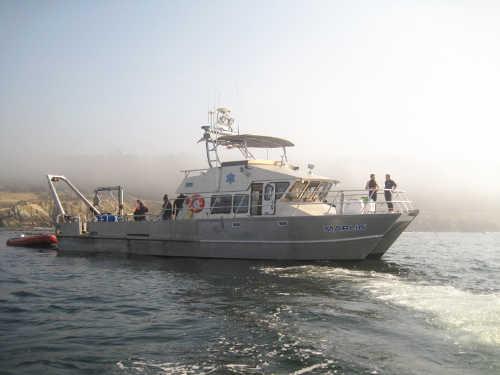
NORTH COAST, Calif. – Similar to the “CSI” television series, California Department of Fish and Wildlife and university researchers have used a multidisciplinary approach they call “forensic genomics” to investigate a mysterious die-off of red abalone and other species along the Sonoma Coast in Northern California.
A paper describing this new approach was published in the April 16 issue of the scientific journal Nature Communications.
In 2011, large numbers of red abalone, sea stars, sea urchins and other marine invertebrates were found dead along 62 miles of Sonoma County coastline.
The die-off, which occurred in relatively shallow water, did not affect fish.
Like CSI detectives, environmental scientists Laura Rogers-Bennett of CDFW and Pierre De Wit of Stanford University collaborated with others to determine exactly what caused the die-off.
CDFW wildlife officers collected samples of the first dead abalone that washed ashore, and CDFW biologists, who had just completed abalone monitoring dives for the year, gathered forces to complete a new set of reconnaissance dives to assess the damage and collect water samples from the area.
CDFW Environmental Scientist Kristin Hubbard nets a plankton sample.
CDFW Senior Environmental Scientist Laura Rogers-Bennett prepares a plankton sample for testing.
An unprecedented red tide, or algae bloom, that coincided with the die-off was suspected of playing a role in the event.
At the time, Rogers-Bennett noted that, “If the cause of the die-off is linked to a harmful algae bloom, it would be the first scientifically confirmed report of such an occurrence off the Sonoma Coast.”
Samples from the dead abalone tested negative for the usual algae bloom-related suspects that occur along the California coast, including domoic acid and paralytic shellfish toxin.
Researchers did notice that Gonyaulax algae, which can sometimes produce toxins, was abundant in water samples.
However, the single time Gonyaulax toxin had been previously detected in California waters, it did not cause a die-off.
De Wit had joined Rogers-Bennett only a few months before the die-off to gather red abalone samples at Fort Ross.
The two planned to use the samples to sequence the red abalone’s whole transcriptome, genetic material that tells where genes are turned on or off at the time of sampling.
Neither researcher could have realized at the time that the transcriptome would play a key role in identifying the culprit behind the die-off.
Because scientists know which genes turn on or off when exposed to various natural toxins, they can identify the toxins that cause an animal’s illness or death through genetic examination.
After the die-off, the two researchers took samples from surviving abalone at Fort Ross, and De Wit compared the transcriptomes of abalone sampled before and after the event.
His genetic comparison showed that the surviving abalone had all been exposed to Gonyaulax toxin.
De Wit found that the genes known to be affected by the toxin were “turned on” in those abalone, said Rogers-Bennett. No other toxic fingerprints were found.
The new genetic testing provided a powerful method to finally establish the cause of the die-off, supported by other findings such as the traces of Gonyaulax toxin found in the gut tracts of dead abalone and the abundance of the algae in the water.
“Looking forward, the key to using forensic genomics successfully is to gather baseline genetic information from wildlife populations before the next mass mortality event,” said Rogers-Bennett.
Being able to identify the cause will help CDFW marine fishery managers respond to die-offs with the most appropriate regulatory adjustments.
Forensic genomics holds promise as a method for tracking not only other natural toxin events caused by algal blooms, but also tracking the effects of low-oxygen and acidification events and ocean warming.


 How to resolve AdBlock issue?
How to resolve AdBlock issue? 




